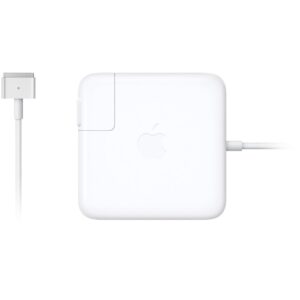Tired of dealing with a faulty battery cable? Don’t worry, we’ve got you covered! In this article, we will guide you through the process of how to replace the negative battery cable in a simple and efficient way. No need to spend a fortune on professional help or waste time searching for complicated solutions. With our step-by-step instructions, you’ll be able to get your car up and running smoothly again in no time. So, let’s dive right in and learn how to replace that negative battery cable!
How to Replace Negative Battery Cable: A Step-by-Step Guide
Replacing a negative battery cable is an essential maintenance task for any vehicle owner. Over time, the cable may become worn or corroded, leading to poor electrical connections and potential starting or charging issues. In this comprehensive guide, we will take you through the process of replacing the negative battery cable step by step. By following these instructions, you can ensure a smooth and successful replacement, helping to maintain the performance and reliability of your vehicle.
Tools and Materials Needed
Before we dive into the replacement process, let’s gather the necessary tools and materials. Here’s what you’ll need:
- New negative battery cable
- Socket set
- Wrench
- Wire brush or terminal cleaner
- Protective gloves
- Safety glasses
Step 1: Safety First
As with any work involving your vehicle’s electrical system, it’s crucial to prioritize safety. To ensure your well-being during the replacement process, remember to take the following precautions:
- Turn off the ignition and remove the key to prevent any accidental starting of the vehicle.
- Put on your protective gloves and safety glasses to shield yourself from potential hazards.
- Review the vehicle’s manual for any specific safety instructions or precautions related to the battery replacement.
Step 2: Prepare the Work Area
Creating a clean and organized work area will help you work efficiently and minimize the risk of damaging any components. Follow these steps to prepare the work area:
- Park the vehicle on a level surface and engage the parking brake.
- Open the hood and securely prop it up with the hood support rod.
- Identify the battery and familiarize yourself with its location.
- Clean the battery terminals and surrounding area using a wire brush or terminal cleaner to remove any corrosion or buildup.
Step 3: Disconnect the Negative Battery Cable
Now that your work area is ready, it’s time to disconnect the negative battery cable. Follow these steps carefully:
- Locate the negative terminal on the battery. It is often marked with a minus (-) sign.
- Using a socket or wrench, loosen and remove the nut or bolt securing the negative cable to the terminal.
- Gently twist and pull the negative cable to disconnect it from the battery.
- Set the disconnected cable aside, away from the battery terminals, to prevent accidental contact during the rest of the replacement process.
Step 4: Remove the Old Negative Cable
With the negative cable disconnected, you can now remove the old cable from the vehicle. Follow these steps:
- Inspect the old cable for any signs of damage or wear, such as fraying or corrosion. If necessary, take note of the routing of the cable to aid in the installation of the new one.
- Trace the cable from the battery to its end points, noting any clips, brackets, or fasteners holding it in place along the way.
- Using a socket or wrench, remove any fasteners securing the negative cable to the vehicle’s body or engine.
- Disconnect the cable from any clips or brackets, being careful not to damage any other components in the process.
- Remove the old negative cable from the vehicle.
Step 5: Install the New Negative Cable
Now that the old cable is out of the way, it’s time to install the new negative battery cable. Follow these steps:
- Inspect the new cable to make sure it matches the length, gauge, and terminal type of the old cable.
- Starting from one end, route the new cable along the same path as the old cable, securing it with any clips or brackets as necessary.
- Reconnect the negative cable to any previously detached clips or brackets.
- Position the end of the new cable over the negative battery terminal.
- Tighten the nut or bolt that secures the negative cable to the terminal. Ensure it is securely fastened but be careful not to overtighten, as it may damage the terminal.
Step 6: Final Checks and Reassembly
With the new negative battery cable installed, it’s time to perform some final checks and reassemble any components you removed earlier. Follow these steps:
- Inspect the entire length of the new cable, ensuring it is properly secured and free from any kinks or obstructions.
- Reinstall any fasteners that were removed during the old cable’s removal.
- Double-check all connections to make sure they are tight and secure.
- Remove any tools or debris from the engine bay.
- Close the vehicle’s hood securely.
Congratulations! You have successfully replaced the negative battery cable in your vehicle. By following this step-by-step guide, you’ve taken an important step towards maintaining your vehicle’s electrical system for optimal performance and reliability.
Remember, if you encounter any challenges during the replacement process or are uncertain about any step, it’s always best to consult a professional mechanic or refer to your vehicle’s manual for guidance.
Frequently Asked Questions
How do I replace the negative battery cable?
Replacing the negative battery cable is a relatively simple process that can be done in a few steps:
What tools do I need to replace the negative battery cable?
To replace the negative battery cable, you will need the following tools:
Can I replace the negative battery cable myself?
Yes, you can replace the negative battery cable yourself, as long as you have the necessary tools and follow the correct steps.
Is it necessary to disconnect the battery before replacing the negative battery cable?
Yes, it is crucial to disconnect the battery before replacing the negative battery cable. This ensures safety and prevents any accidental electrical discharge.
What precautions should I take while replacing the negative battery cable?
When replacing the negative battery cable, it is essential to take the following precautions:
Do I need to replace the negative battery cable if it appears worn or damaged?
If the negative battery cable appears worn or damaged, it is recommended to replace it to ensure proper functioning of the vehicle’s electrical system.
Final Thoughts
Replacing a negative battery cable is a vital maintenance task for every vehicle owner. With the right tools and a step-by-step approach, you can easily tackle this job. Start by disconnecting the negative terminal, then locate the cable and follow it to the connection point. Remove any clamps or bolts securing the cable, and carefully detach it. Install the new cable, making sure it is properly positioned and secured. Finally, reattach the negative terminal and test the new cable’s functionality. By following these simple steps, you can successfully replace a negative battery cable and ensure the electrical system of your vehicle functions optimally.



